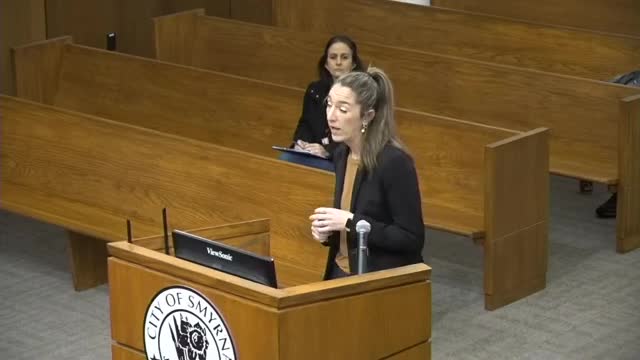Smyrna approves variance for home addition despite stream buffer constraints
February 13, 2025 | Smyrna, Cobb County, Georgia
Thanks to Scribe from Workplace AI , all articles about Georgia are free for you to enjoy throughout 2025!

This article was created by AI using a video recording of the meeting. It summarizes the key points discussed, but for full details and context, please refer to the video of the full meeting. Link to Full Meeting
The primary discussion centered around a proposed home addition that would increase the living space to approximately 1,600 square feet, featuring three bedrooms and two bathrooms. This addition aims to bring the property closer to the R-15 zoning requirement of 2,000 square feet. However, the property is constrained by multiple stream buffers, including a 50-foot and a 75-foot buffer mandated by the city, as well as a 25-foot buffer from the state. These buffers are in place due to a stream running at the rear of the property.
Notably, the property was platted in 1954, prior to the enactment of the stream buffer ordinance in February 2005. This historical context is crucial, as it establishes that the current hardship faced by the property owner is not self-created. The engineering department confirmed that no additional variances are necessary for the addition, as the project will not exceed the maximum impervious surface area of 35% and will not encroach on any setbacks.
The board received no opposition to the variance request, and staff expressed support for the application, recommending approval with standard stipulations. A precedent for this type of variance was established in 2019 with a similar request approved for a neighboring property.
During the meeting, the applicant, Joel Powell, provided insights into the project, emphasizing the need to modernize the aging home while respecting the environmental constraints. He assured the board that efforts would be made to stabilize and revegetate the disturbed areas of the yard, although specific plans for this were not submitted with the variance application.
In conclusion, the board's discussions underscored the delicate balance between property development and environmental protection in Smyrna. The approval of this variance could set a positive precedent for future residential projects facing similar challenges, reflecting the community's evolving needs while adhering to regulatory frameworks. The board's decision on this matter will be pivotal in shaping local development practices in the context of environmental stewardship.
Converted from 02.12.2025 License and Variance Board Meeting meeting on February 13, 2025
Link to Full Meeting
Comments
View full meeting
This article is based on a recent meeting—watch the full video and explore the complete transcript for deeper insights into the discussion.
View full meeting
